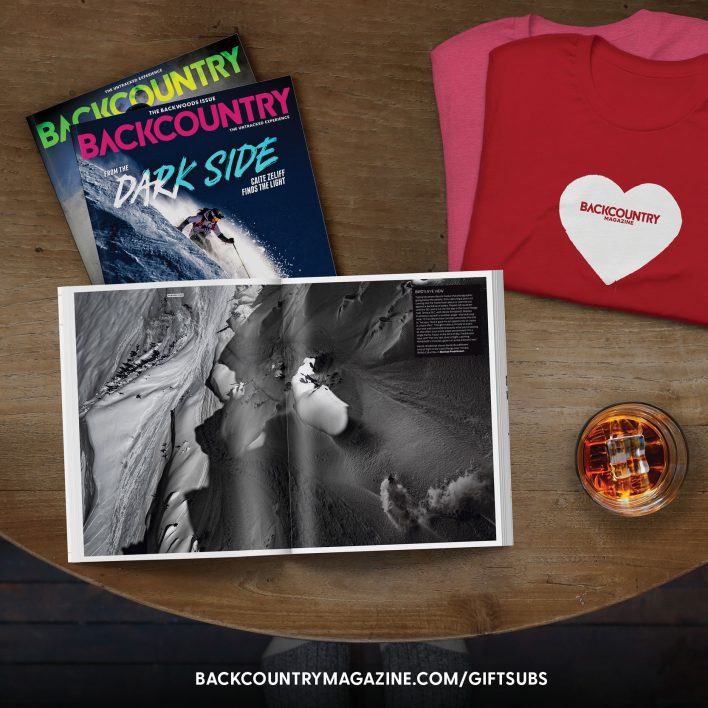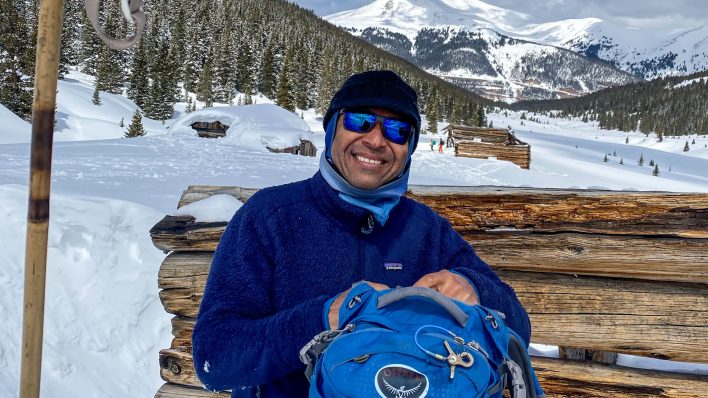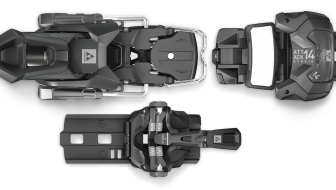Cores composites, sidewalls and rocker profiles. Oh my! There’s a lot of technology that goes into our ski gear, not to mention a ton of insider lingo and technical jargon. So here’s some info on the key pieces of ski construction to use when selecting your next pair.
Profile
Ski profile is the sideview. When you put two skis base-to-base, you can see the profile. Where will it touch the snow? How a ski turns and what snow types it will work in are ultimately determined by the profile. An important consideration with a ski’s profile is known as effective edge. Effective edge describes how much of the edge is actually in contact with the snow when we ski—it’s why some planks may feel like they ‘ski short’ and others ‘ski long,’ despite being similar lengths.
Rocker
The tips and tails of a rockered ski curve up off the snow. Rockered skis can better cut through powder and crud and are more forgiving but have a shorter effective edge.
Camber
Camber arcs off the snow underfoot and allows the ski to flex. A long camber pocket has a longer effective edge, which adds bite and stability. A short camber pocket allows for quicker turns. How far the camber rises off the snow also changes ski performance. A high camber pocket means the ski will flex and pop more. A low camber pocket is less lively, but more predictable when initiating and holding a turn.
Reverse Camber
When a ski is fully rockered, it looks like the rails of a rocking horse. This gives maximum fun in powder, but, with very little ski-to-snow contact, it suffers on hardpack and the skintrack.



Sidewalls
Sidewalls are the narrow section between bases and topsheets and construction can significantly impact performance. They are a key part of stiffness and edge hold. Full, vertical sidewalls offer maximum stiffness and grip but come at a weight penalty, so many backcountry skis opt for an in-between option.
Capped Construction
In capped construction, the topsheet wraps around to the edges, sacrificing edge hold for weight savings.

Sandwich Construction
Sandwich construction uses vertical sidewalls made from either durable plastic or a biobased material. They add weight and increase the stiffness of the ski. In partial sandwich construction, vertical sidewalls underfoot taper into capped in the tips and tails.

Half-capped Construction
The topsheet folds over the sidewalls but only extends halfway to the edge, leaving a mini vertical sidewall.

Cores
Inside the ski, the pairing of wood type and reinforcement determines weight, strength, flex and dampness. The wood type in a ski core will often be a large part of determining a ski’s energy and rebound, as well as weight. Heavy metals like titanal add stiffness and even more weight. Generally, more weight equals more damping and stability, but that’s not always the case. Lighter materials like carbon, fiberglass and basalt can also add stiffness but may disrupt the wood’s flex pattern if not laid carefully.
Most skis are made of multiple materials, usually a main woodcore plus reinforcements. Materials like titanal, fiberglass and carbon are layered on top of the core, sandwich both sides or can even be inlaid as stringers—small strips that run vertically tip to tail. Sometimes, heavier or lighter wood is also inlaid as stringers or reinforcement as well. The materials are then held together by an epoxy. The resulting layup means that it’s hard to judge a ski by just its core materials. Two skis made of the same material can ski completely differently due to varying layups.
Maple: Dense, stiff, durable, heavy
Aggressive skiers will appreciate the power transfer from this damp, stiff and durable core, but it comes at the cost of a weight penalty on the ascent, and playful/less aggressive skiers may feel a sluggish response time.
Aspen and Poplar: Poppy, medium weight, durable
Medium weight and stiffness create a lively, poppy and playful ski, but it can be deflected at speed or in crud, and aspen and poplar skis aren’t the lightest of weights. While the two woods are similar, aspen is a touch more durable and poplar may be a touch more playful.
Karuba and Paulownia: Soft, light, less durable
Super light and saves significant weight for long days in the skintrack. Karuba and Paulownia skis specialize on the ascent, but the softer flex and said lightweight mean more chatter and slightly lesser durability.
Titanal: Damp, stiff, heavy
Often laid under the binding of a ski in what’s known as a mounting plate, titinal is the go-to metal for damping and stiffness. Favored in resort skis or freeride setups, titinal equals a heavier, more aggressive ski.
Fiberglass: Strong, responsive, heavy
The middleman of reinforcements, fiberglass is strong and responsive. Lighter than titinal but still heavier than wood, it offers strength, durability and some stiffness without the super-stiff carbon feeling.
Carbon Fiber: Stiff, expensive, extremely light
The gold standard for stiffness and light weight, the tradeoff with carbon is that it lacks the flexibility and forgiveness of reinforcements and wood. It is often described as pingy by naysayers, but it all depends on the specific layup. Also, carbon fiber is expensive.










Related posts: